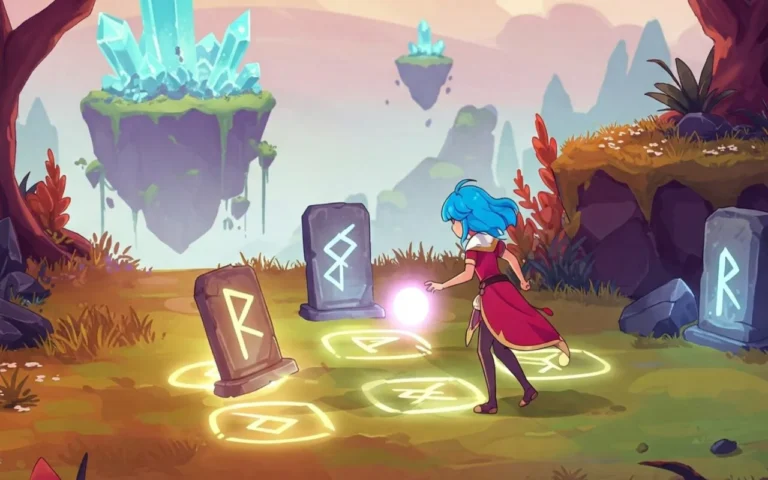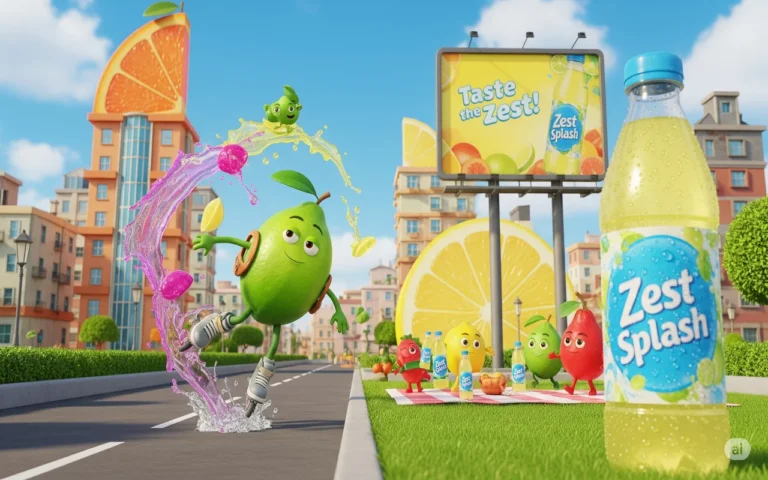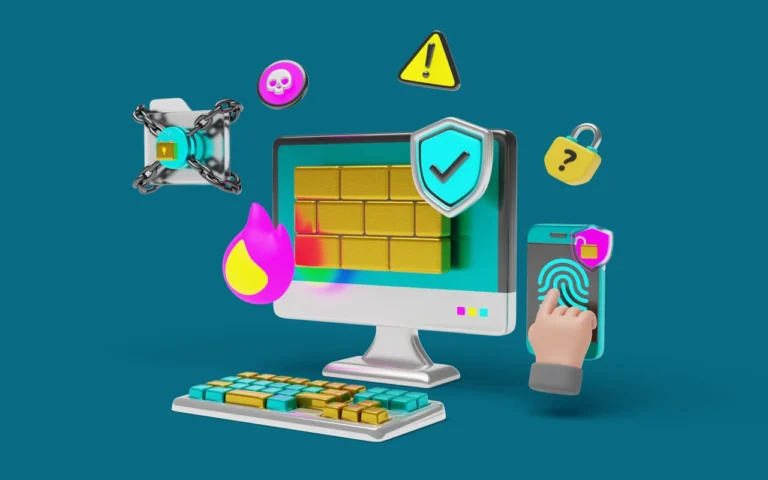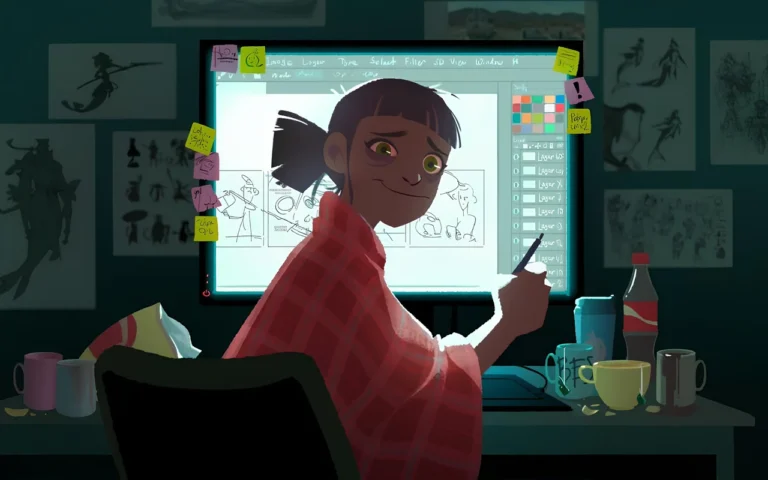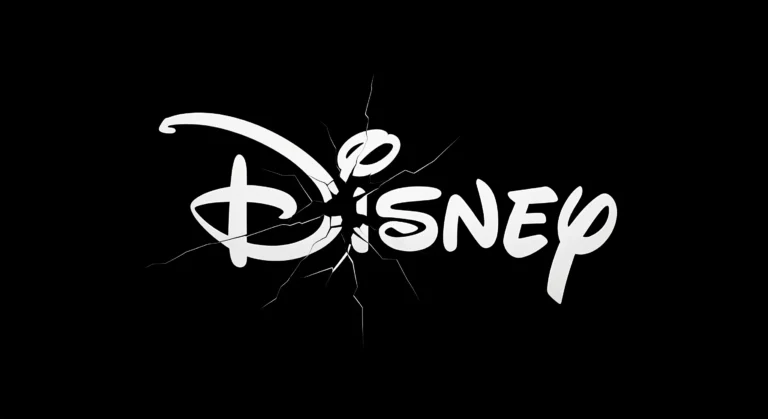Transmedia storytelling is a popular technique to tell a story differently across multiple platforms. In this technique, the story is told differently based on the medium which is used. You can see transmedia storytelling in comics, films, print media, radio, video games, animations, and social media. Each media and platform has its own audience, a special storytelling method, and transmedia strategy. We will also explore some transmedia storytelling examples in this blog.

Need Animation Services?
Visit our Animation Service page to see how we can help bring your ideas to life!
What Is Transmedia Storytelling?
Transmedia storytelling refers to storytelling across multiple platforms, where each platform makes a distinct contribution to a unified story world. For example, the Star Wars franchise utilizes films to tell the central narrative while TV shows like The Mandalorian expand on side stories. Comic books dive deeper into backstories of characters. Video games allow fans to immerse themselves into the world by taking on the role of key characters. Each platform provides a unique way to engage with the story world.
Based on morphology, transmedia is made of two words, trans as a prefix which means across and media which is what you are using now to understand what transmedia storytelling is. Transmedia storytelling is the technique of telling, designing, and sharing a real or fake story across multiple traditional and digital platforms and media.
Fundamentals of Transmedia Storytelling
Transmedia storytelling is not just one story on different platforms. It’s about making one big story world. Each platform adds something special. This is a powerful way to get audiences really involved. It makes the world feel bigger and alive.
Henry Jenkins’ Core Definition & Principles
Henry Jenkins first defined this idea. He said transmedia storytelling is when you spread parts of one story across many channels. Each part adds something important to the whole story. Jenkins gave some rules:
- Spreadability vs. Drillability: Content should be easy to share. But it should also have deep layers for fans to explore.
- Continuity & Multiplicity: The story must be the same on all platforms. But it can also show different views and new story parts.
- Immersion & Extractability: The audience can jump into the story world. They can also take parts of the story with them, like characters.
- Worldbuilding: The story is built in a complex world. This world can hold many stories and characters.
- Seriality & Fragmentation: The story is told in pieces across different media. The audience has to put the full picture together.
Origins: Convergence Culture, Participatory Fans & Spreadable Media
Transmedia storytelling comes from modern media culture. It started with convergence culture. This is when different media and technologies came together. It was pushed by fans who got involved. They made fan fiction, art, and wikis. This led to spreadable media. Content is made to be shared and changed. It blurs the line between a creator and a consumer.
Differentiating Transmedia, Intermediality & Media Mix
People often get these words mixed up. But they are different.
- Transmedia Storytelling: This is one whole story. It’s told across many platforms. Each platform adds a new piece to the story. If you only see one part, the story is not complete.
- Intermediality: This is about how different media connect. It’s when a story is adapted from one medium to another. Like a book becoming a movie. The main story stays the same.
- Media Mix: This is just using different media to market one thing. Like promoting a movie with social media and TV ads. The content doesn’t change. It’s just marketing.
Why Transmedia Works
Transmedia storytelling works because it connects with people. It goes past just watching a story. It turns the audience into active participants. They get involved in the story.
The Power of Platform-Specific Storytelling
One of the cool parts of transmedia is using each medium for what it’s good at.
- Film/TV: Good for the main story.
- Video Games: Let fans become a character and be a part of the world.
- Comics/Novels: Can go deep into backstories and world details.
- Social Media: Makes the story feel like it’s happening right now. It lets the audience interact.
- Websites/AR: Give extra content, like maps or documents. They expand the world.
Audience Drive & Active Engagement in Narrative Expansion
Transmedia works because it gives the audience power. Fans want to find all the parts of the story. They put the story together like a puzzle. This makes them feel a deeper connection. The story feels like it is theirs. By leaving gaps in the main story, transmedia turns passive viewers into dedicated ‘prosumers’. These people are key to finishing and expanding the story.
Designing a Transmedia Campaign
Creating a successful transmedia campaign requires a thoughtful and systematic approach. It’s about building a robust world first, then carefully distributing narrative elements across platforms.
Developing a Story world & ‘World Bible’
The foundation of any transmedia project is a detailed and expansive story world. This world must be rich enough to support multiple stories and characters. A ‘World Bible’ is a critical tool for this process. This is a full document. It contains all the lore, history, and rules. This makes sure all the creators, across every medium, are working from the same information.
Mapping Content to Platforms: Film, Web, Comics, Games
Once the story world is done, the real work begins. You have to figure out what parts of the story to put on each platform. Like, a big fight scene is perfect for a movie. But what a character thinks is better for a novel or comic book. This makes sure each platform adds a new and important part to the whole story. So, the whole world feels complete and all tied together.
- Film: Main plotline
- Web Series: A side story focusing on a secondary character
- Comic Book: An origin story for a key villain
- Video Game: This is a story that happens between the movies. The player can change some small events.
This method makes sure every part of the story adds something new. It gives a unique and important part to the whole story.
Engaging Fans: Prosumer Strategies & Social Triggers
A key component of transmedia is encouraging audience participation. Prosumer strategies turn consumers into creators. This can include:
- Encourage fan art and fan fiction.
- Create forums and wikis. Fans can talk and write about the story.
- Host contests for content fans make.
You can also use some social media tricks. Hide a clue in one medium that fans need to find in another. Or use a hashtag. This lets fans work together to find a new part of the story.
Transmedia Storytelling Examples
Here are some examples of transmedia storytelling:
Films, TV shows, comic books, novels, video games, and more.
Films, TV shows, comic books, and more.
Comic books, video games, and animated films.
Books, movies, theme parks, and more. Harry Potter’s transmedia extensions—like Pottermore (now WizardingWorld.com), video games, and theme parks—engage learners through interactive quizzes, immersive environments, and layered storytelling that reinforce themes and media literacy.
Books, TV shows, and even a video game.
Digital games and videos.
Animation, written articles, and behind-the-scenes clips.
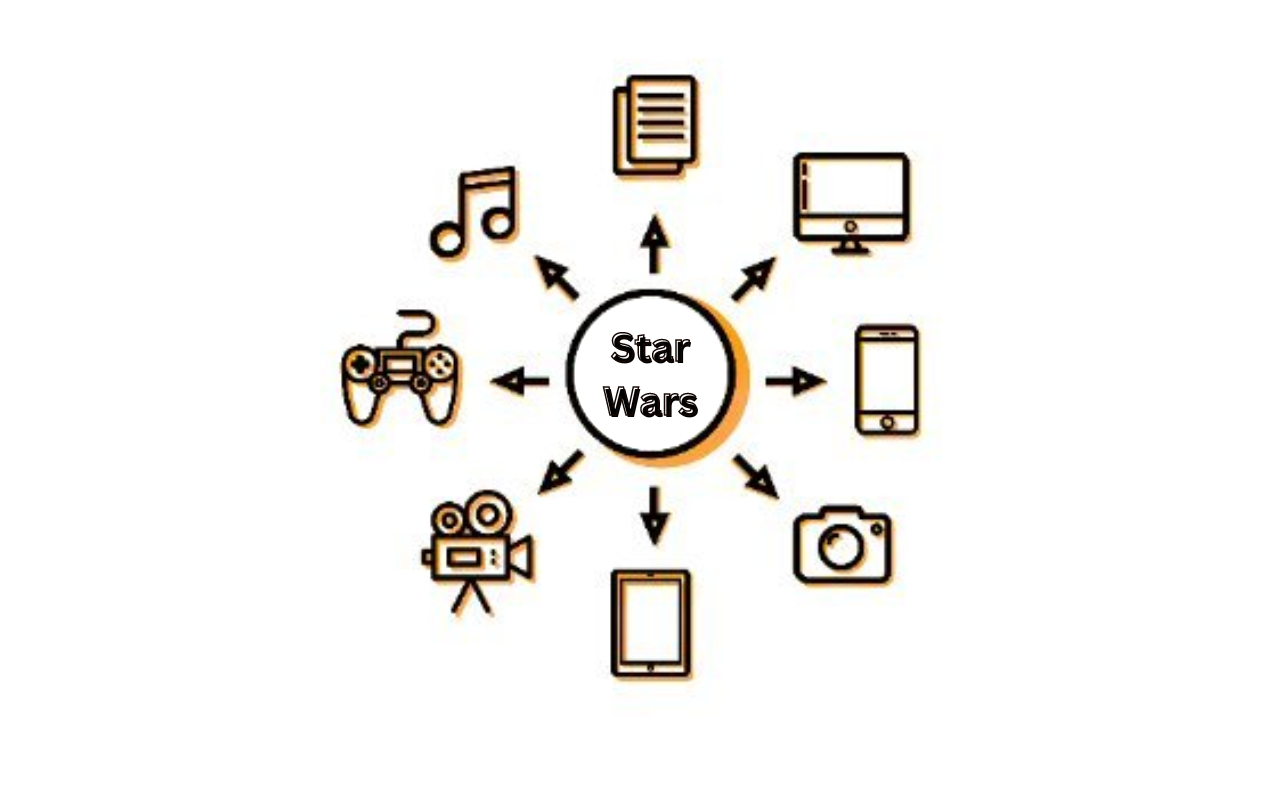
Traditional Storytelling vs. Transmedia Storytelling
The main and first difference is in the number of media that are telling the story. In traditional storytelling, only one platform and medium are used to tell the story. On the other hand, transmedia storytelling uses multiple media and platforms such as books, films, TV shows, animations, video games, and social media (Instagram, Facebook, Twitter,…).
Transmedia storytelling is a more challenging form of storytelling that allows the audience to connect with the story in various ways. However, traditional storytelling is limited and straightforward to a single medium.
With traditional storytelling, audiences passively receive a story through a single medium like a book or film. But transmedia allows audiences to actively engage with a story world across platforms, each providing a unique perspective. Fans can immerse themselves deeper and in different ways, such as following side characters or revisiting favorite elements of the world across various media. It results in a highly interactive, participatory experience.
The Benefits of Transmedia Storytelling
Do you know why is transmeda storytelling important? There are several benefits of transmedia storytelling. Each platform has the ability to provide a unique story that improves the whole plot, character backstories, and world around them. Here is a list of these advantages:
- The power to give audiences a more immersive and engaging experience of a story world.
- The power to provide unique story components.
- The power to help media businesses and content creators reach new and diverse audiences.
In general, transmedia storytelling is a powerful technique for businesses and content creators who wish to develop engaging and enjoyable story worlds by using a variety of platforms and formats.

Different Types of Transmedia Storytelling
Animation – The Animatrix short film anthology expanded on the universe of The Matrix through anime. A website with games and activities could engage Harry Potter fans. An influencer-driven social media campaign could generate user-submitted Star Wars fan fiction.
Here are three different versions and ways of transmedia storytelling:
1. Animation
Animation ideas are created to bring the story to life. The animated film could be produced by 3D animation studios and be geared toward children. Bright colors and a catchy soundtrack can be used to appeal to young audiences in the 3D animation pipeline.
Traditional channels like cinemas or television or modern channels like streaming services or YouTube are the media that can be used in this case.
2. Website
An interactive website could be created to let users experience the story uniquely. Games and activities related to the story might engage the audiences, and users could interact with the characters through virtual reality.
The website could also include educational resources that teach children about the themes and morals of the story.
3. Social Media Campaign
Telling the story through a series of short videos or images is another way of transmedia storytelling. These animations for social media and the campaign should be shared on several social media platforms like TikTok, Instagram, Twitter, etc.
Also, it can use famous influencers or celebrities to promote stories. And the last way to use user-generated content is to encourage the audiences to share their own stories about overcoming their feeling.
Read More: Storytelling in Animation
Transmedia Storytelling in Animation & Game Development
- Increased narrative depth and engagement: It allows creators to build far richer worlds and explore characters more thoroughly, and present different angles to the story so that the audience can deeply connect with it.
- Increased player/audience engagement: it creates investment and loyalty, as players/audience dig deeper into the story and engage across multiple platforms.
- New revenue streams: when a narrative is expanded, it can create merchandising, licensing, and other monetization opportunities.
- Broader audience reach: Different platforms attract different demographics, allowing for an expanded audience.
Transmedia storytelling and player engagement in games
It creates a more immersive and interactive environment, allowing players to explore different facets of the story through various media. This can deepen the player’s connection to the game world and foster a sense of investment and loyalty.
How AI Contributes to Transmedia Storytelling in Animation & Games
AI empowers transmedia storytelling in animated features and games with narratives that are responsive to choices and behaviors, providing unique experiences through player-driven aspects like flexibility in storyline progression and personalized dialogue.
AI also enables realistic and emotional characters, either automatically through AI-driven animation and voice synthesis, or through the development of complex biographies for each character. Additionally, AI allows for complex virtual worlds to be built through procedural content generation, and then adapted in real-time through player actions.
Overall, AI represents a seismic shift in narrative design, which leads to greater player engagement and immersion across platforms.
What are the ethical considerations of using AI in transmedia storytelling?
Transparency, bias mitigation, privacy, and intellectual property rights are key concerns. Additionally, navigating potential job displacement and ensuring authentic representation requires careful attention. The aim is to leverage AI’s power responsibly without sacrificing ethical principles.
Apply Transmedia Storytelling to Your Marketing
Transmedia marketing can help businesses connect with their target audience more effectively and effectively. Here you can see how to apply transmedia storytelling to your marketing:
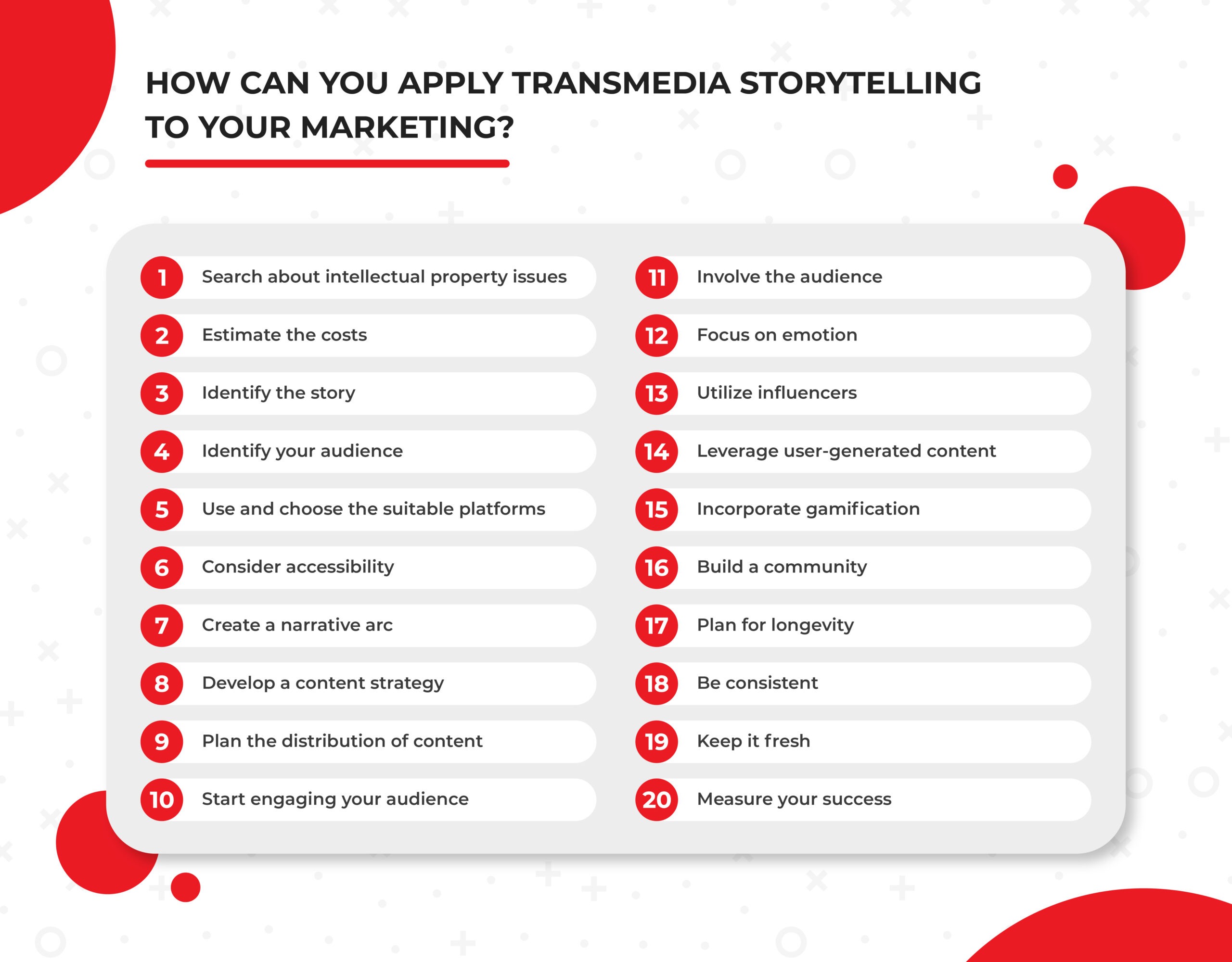
Tips for Utilizing Transmedia Storytelling
- Identify unique perspectives different platforms can provide
- Build engaging communities to sustain interest
- Maintain consistency in canon/characters across media
- Leverage the affordances of each medium
- Coordinate messaging and experiences across platforms
What You Will Face in Transmedia Storytelling
Transmedia storytelling poses several challenges in most of the transmedia examples. Some of the challenges include the following:
Maintaining Consistency
Pay attention to the consistency of characters, settings, and plot points in the different media due to the limitations and conventions.
Balancing the Story
Each medium has its own strengths and weaknesses; it’s important to balance the story in a way that takes advantage of the strengths instead of the disadvantages and weaknesses. In addition, maintaining the whole narrative coherence is important to care about.
Audience Fragmentation
Audiences change while platforms change. it’s hard to ensure that the audience is engaged and will follow the story across different platforms or not.
Costs
Transmedia storytelling can be an expensive way of storytelling, as it includes multiple platforms. But if you are a small creator or company, you can decrease the number of platforms to manage costs.
Intellectual Property Issues
Licensing and copyright are some intellectual property issues that you may face during transmedia storytelling. Before starting the process, make sure you know everything about these issues.
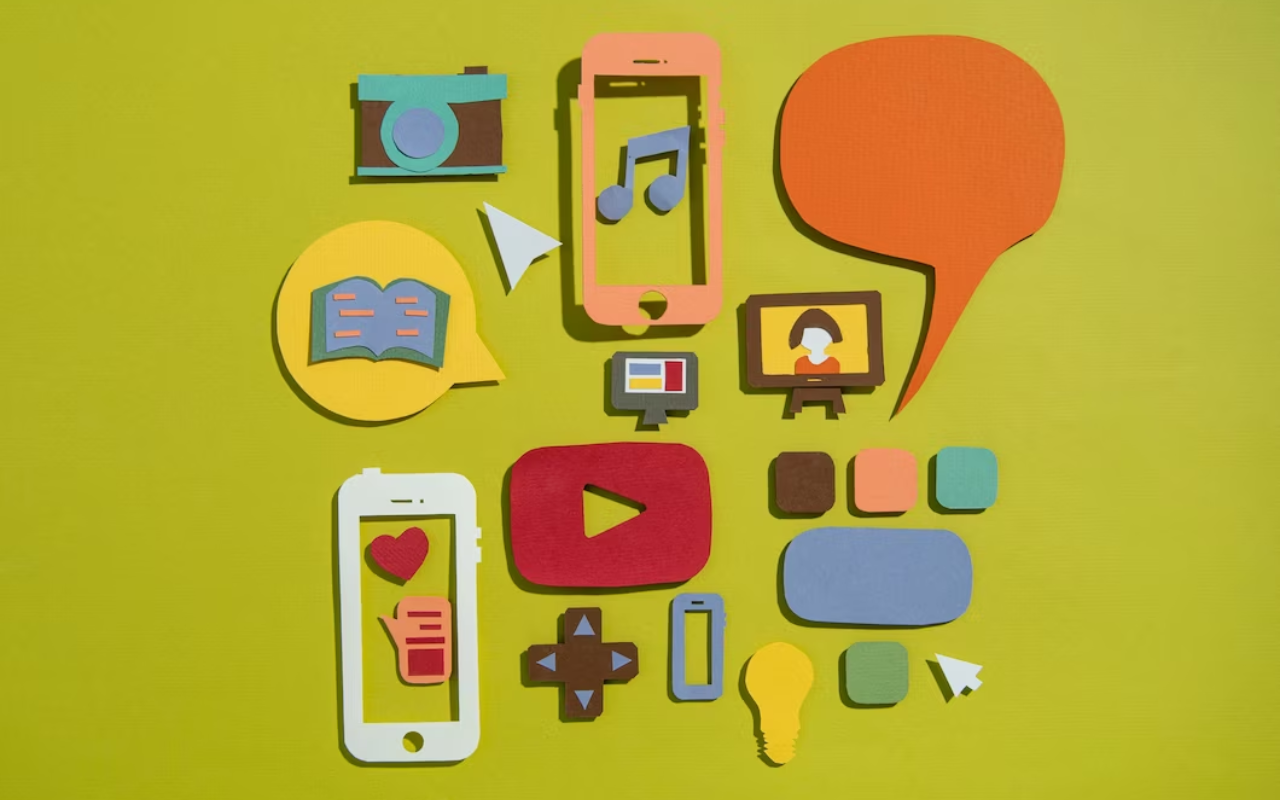
Differences between Transmedia, Multimedia, & Cross-Media
The key differentiator is that with transmedia, each platform contributes something new to the narrative. Multimedia and cross-media focus more on enhancing delivery of core content. Let me know if you need any clarification or have additional questions!
Transmedia | Multimedia | Cross-Media | |
|---|---|---|---|
Definition | Telling a story across multiple media platforms, where each platform makes a distinct contribution | Integration of multiple media formats (text, audio, video, images) within a single platform | Distributing the same content across multiple media platforms |
Goal | Provide unique storytelling experiences tailored to different platforms | Enhance engagement through varied content types in one place | Maximize reach by repurposing content |
Example | Star Wars films, TV shows, books, comics, and video games that build out the story world | News website with articles, images, video clips and audio files | Adapted book released as a film and novel |
Audience Experience | Active participation across platforms lets fans immerse deeper into stories | Rich experience consuming varied aspects of the same core content | Exposure to the same content through different media types |
Canonical Storyline | Core narrative exists, secondary extensions build intricacy | Self-contained story tailored to strengths of incorporated formats | Typically associated with one primary storyline or message |
Exemplary Case Studies
Examining successful transmedia campaigns provides invaluable insight into how these principles are applied in the real world.
The Matrix: Films, Comics, Games & Animated Shorts
The Matrix is a great example of transmedia storytelling. The main story was in the movies. But other media made the world bigger in important ways.
- Films: These had the main story about Neo.
- The Animatrix: These were animated shorts. They gave important backstory about the Matrix and the war.
- Comics: They had extra stories about characters. These stories were not in the movies.
- Video Games (e.g., Enter the Matrix): You could play through events happening at the same time as the films. It gave you new information about the plot.
Star Wars, Pokémon & the Building of Multiplatform Universes
Star Wars
A perfect example of a vast, multiplatform universe. The original films form the main canon, but the story is constantly expanded by:
- TV shows like The Mandalorian show new times and characters.
- Novels and comics talk more about the world and characters’ pasts.
- Video games like Jedi: Fallen Order let players have new adventures in the world.
Pokémon
The Pokémon brand used transmedia to become one of the most famous brands in the world.
- Video Games: The core narrative and gameplay loop.
- Anime: Follows the journey of a single trainer, Ash, providing a character-driven narrative.
- Trading Card Game: A physical medium that extends the world and gameplay in a new format.
- Films: Standalone cinematic adventures featuring beloved characters.
Transmedia in Marketing
Transmedia isn’t only for games or movies. It’s also a powerful tool for marketing.
Examples:
- Compare the Meerkat: This ad campaign made a whole world for a meerkat character. It went from TV commercials to a website, books, and apps. The character became super famous.
- Burberry World: This fashion brand made a digital platform. It mixed their products with music, films, and live events. It told the brand’s story, making it a world people could be a part of.
Challenges & Pitfalls to Avoid
Transmedia is a powerful tool. But it also has some problems. These problems can make or break a project.
Avoiding Redundancy vs Unlocking New Content
The biggest mistake in transmedia is telling the same story everywhere. You have to avoid repeating yourself. Each part of the story needs to add something new. A video game should not just be the movie. It should fill a plot hole. Or it should bring in a new character from the comic book. This gives new content to the fans. It rewards them for checking out all the different parts.
Coordinating Multiple Teams & Mediums
Transmedia projects are complicated. They need a bunch of people to work together. A single story might have a film studio, a game team, a comic publisher, and a social media team. A dedicated showrunner is key. They keep one clear vision for the whole project. Without them, the story can get all over the place. That would break the audience’s immersion.
Handling Intellectual Property & Fan Creations Ethically
When a story world gets big it can be hard to tell what’s official and what fans made. Because of this, creators must have clear rules for their intellectual property. Fan content is great for the community. But creators need to be very careful with how they use it in their own work. They should:
- Have clear rules about what’s okay and what’s not.
- Never use fan ideas without asking and paying them.
- Always be respectful and fair to the fan community.
Future Trends & Emerging Models
Transmedia storytelling is an evolving field, constantly adapting to new technologies and audience behaviors.
Transmedia in Immersive Experiences (AR/VR, interactive storytelling)
The future of transmedia is all about new technology. Things like Augmented Reality (AR) and Virtual Reality (VR) are becoming new ways to tell a story. They let you step right inside the world. An AR app, for example, could put a comic character in your room. Or a VR headset could put you in a movie scene. It’s a new level of immersion that blends the real world with the story.
Read More: AR and VR: Revolutionize Games with Jaw-dropping Immersive Adventures
Media-Independent Worldbuilding & Metaverse Strategies
The next big thing in transmedia is media-independent worldbuilding. Instead of starting with a movie, creators will build a full world first. This world isn’t tied to any one platform. Then they can tell stories in that world through games, different types of NFTs, or even theme park rides. The metaverse will make this trend even bigger. It’s a single digital space for a truly ongoing story.
Conclusion
In conclusion, transmedia storytelling is a powerful technique to tell the story across multiple platforms and media with lots of pros, like providing unique story components and engaging experiences, and cons, like maintaining consistency and intellectual property issues.
This kind of storytelling is implemented in transmedia examples like Star Wars, Marvel Cinematic Universe, and Harry Potter in different types of mediums. Transmedia storytelling is expected to continue to evolve and provide new and exciting ways of storytelling.
FAQs
What type of audience is the target of transmedia?
Transmedia targets active and diverse audiences, inviting them to explore and piece together stories across platforms, engaging them deeply as participants and not just passive viewers.
How is transmedia storytelling different from traditional storytelling or cross-media storytelling?
Transmedia storytelling spreads a story across multiple platforms (each adding unique content), while traditional/cross-media merely adapts the same story to different formats without expanding the narrative.
What emerging technologies enhance transmedia storytelling for animation and gaming?
Emerging technologies enhancing transmedia storytelling in animation and gaming include VR, AR, and MR for immersive engagement; transreality gaming that blends virtual and physical experiences; and generative AI that streamlines character animation across platforms.
What is the significance of cloud gaming and streaming for transmedia storytelling?
Cloud gaming and streaming allow transmedia storytelling content to be delivered instantly across devices, deepening immersion, expanding reach, and enabling flexible, seamless narrative engagement.
What is the difference between transmedia & crossmedia storytelling?
Crossmedia adapts a single story across platforms, while transmedia tells different parts of the story on different platforms, each adding to the overall narrative.


